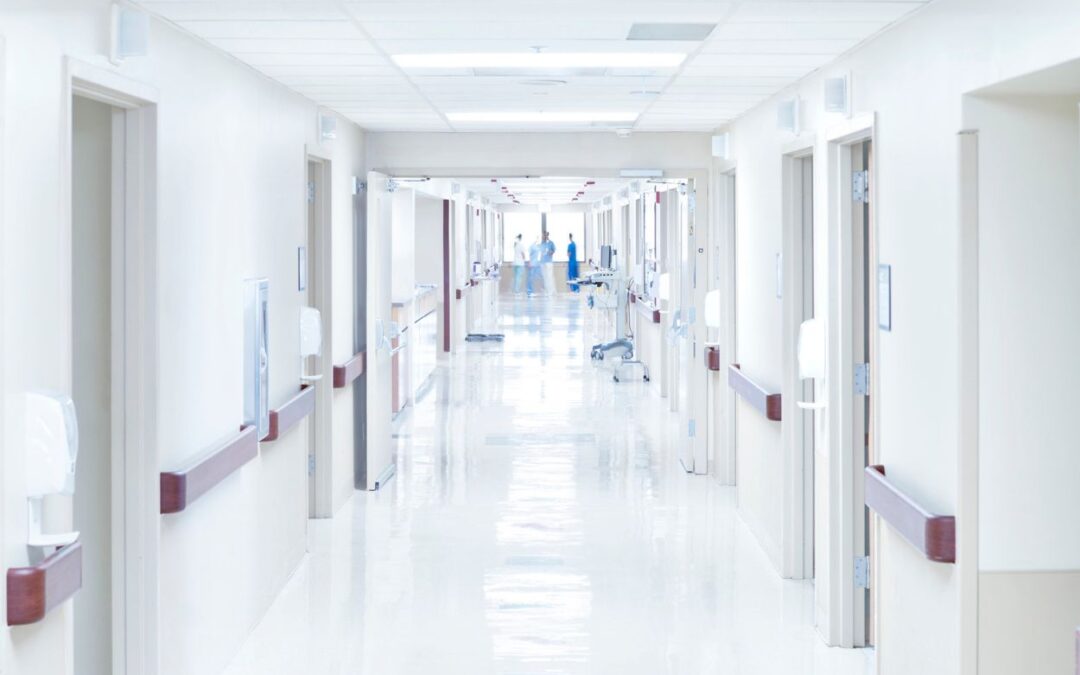Hospital cleaning is a critical aspect of maintaining a safe and healthy environment. A clean hospital matters for all patients, any healthcare workers, and visitors. The cleaning standards and practices in hospitals differ significantly from those in other commercial settings. In this blog post, we will explore the unique aspects that make hospital cleaning distinct and essential for the well-being of everyone involved, and why it matters to hire a professional service.
THE IMPORTANCE OF HOSPITAL CLEANING
Hospital cleaning holds a paramount importance due to its direct impact on patient outcomes. In any healthcare settings, cleanliness isn’t just about aesthetics; it’s often a matter of life and death. Contaminated surfaces can harbor harmful pathogens that may lead to healthcare-associated infections (HAIs). Therefore, rigorous cleaning protocols are implemented to reduce the risk of infections and create a safe healing environment. Professional commercial cleaners are especially skilled at cleaning hospitals and following strict safety protocols.
STRINGENT REGULATIONS AND GUIDELINES
Hospitals are subject to stringent regulations and guidelines imposed by health authorities. These guidelines dictate the frequency and methods of cleaning, disinfection, and sterilization. Professional cleaning companies must adhere to these guidelines to ensure compliance and minimize the risk of contamination.
SPECIALIZED TRAINING
Professional cleaning companies undergo specialized training to handle the unique challenges of healthcare environments. They learn about infection control, the proper use of cleaning agents, and the importance of following strict protocols. This training equips them to handle potentially hazardous materials and situations safely.
HIGH-TOUCH SURFACES AND CRITICAL AREAS
In hospitals, certain areas and surfaces are considered high-risk and require special attention. High-touch surfaces like doorknobs, light switches, and bedside tables are frequently contaminated. Professional cleaning companies can prioritize these areas to prevent the transmission of infections. Critical areas, such as operating rooms and isolation units, demand even more rigorous cleaning procedures to maintain sterility.
ADVANCED EQUIPMENT AND TECHNOLOGY
Hospital cleaning often involves advanced equipment and technology. Ultraviolet (UV) disinfection systems, for example, are used to kill harmful pathogens that may linger on surfaces. Steam cleaning machines and specialized disinfectants are employed to ensure thorough decontamination. These tools enhance the effectiveness of hospital cleaning protocols.
In conclusion, hospital cleaning is a specialized and crucial aspect of healthcare management. It differs significantly from commercial cleaning in other settings due to the stringent regulations, specialized training, and advanced technology involved. The primary goal of hospital cleaning is to create a safe and infection-free environment for patients, healthcare workers, and visitors. By adhering to these unique practices, hospitals can minimize the risk of healthcare-associated infections and contribute to better patient outcomes.
Hospital cleaning goes beyond the surface; it’s a matter of public health, safety, and well-being. The dedication of cleaning staff and the rigorous protocols they follow ensure that hospitals remain places of healing and recovery rather than sources of additional health risks.
In today’s world, where the importance of hygiene is more evident than ever, hospital cleaning stands as a shining example of how attention to detail and strict adherence to standards can make a life-saving difference.


Recent Comments